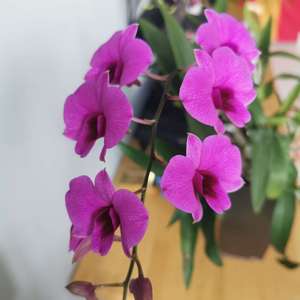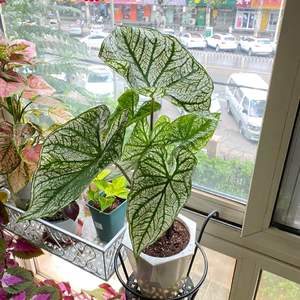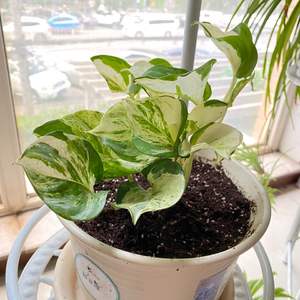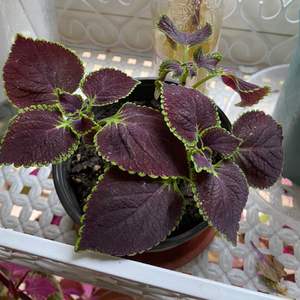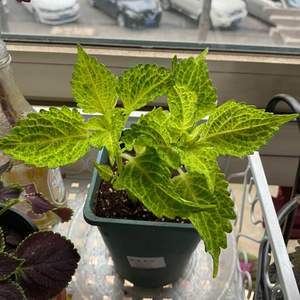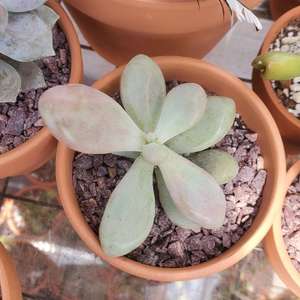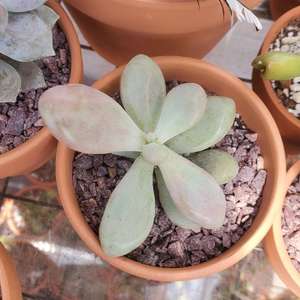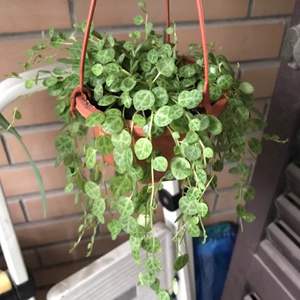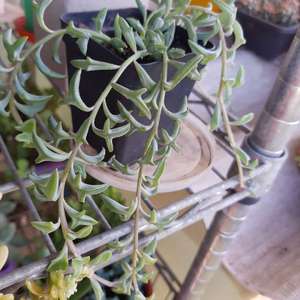文章
ritau
2020年06月22日

*Removing Dead Leaves, Limbs, and Flowers
1. Use sharp scissors or garden shears. Make sure the scissors or garden shears are very sharp, as dull shears can damage the plants. If you notice any dirt on the shears, soak them in water with a teaspoon of bleach and then wipe them dry. A clean tool will ensure your plants are not exposed to bacteria or pests when you prune them.
-You can find garden shears for pruning online or at your local hardware store.
-If you are worried about scratching your hands while you prune, wear gardening gloves.
2. Prune the plants at the beginning of their growing season. If you have houseplants that do not flower, prune them in late winter. For houseplants with flowers or blooms, wait until they have bloomed before you prune them.
- Do not prune houseplants when unopened buds are present on the stems.
3. Remove dead leaves and limbs at a 45 degree angle. Look for any leaves or limbs on the plant that are brown or discolored. They may also appear limp or dry. Use the shears to cut them off just below the brown or dead area at a 45 degree angle. This will ensure you leave as much of the healthy foliage on the plant as possible.
-Do not cut off any leaves or limbs that still appear green and vibrant.
-If a large section of the leafy area appears dead, you can cut off the entire branch. Leave the main stem intact and remove branches shooting off of the stem at a 45 degree angle.
4. Trim off any dead flowers. If you have houseplants that are flowering, make sure you check them over for any dead flowers and remove them. The flowers may appear brown, discolored, and limp. They may also feel dry to the touch. Cut the dead flowers off with the shears at the base of the flower’s head.
-Removing dead and dying flowers on the plant will encourage the growth of newer, more vibrant blooms.
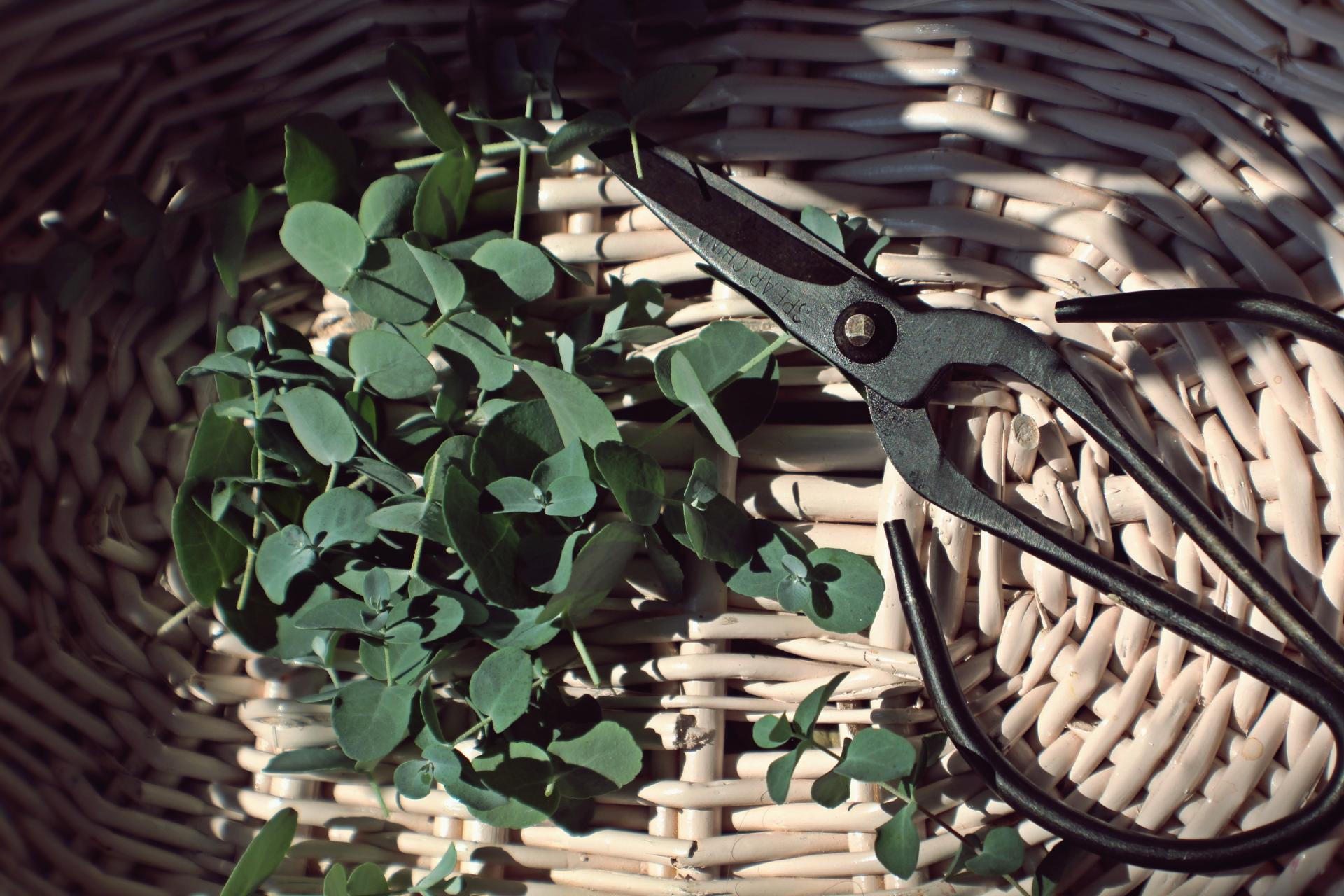
*Cutting Back Overgrown Branches and Stems
1. Prune back half of the longest branches on the plant. Use the shears to cut them back about a third of their length. Trim the branches off at a 45 degree angle.
-If there are any side shoots on the branches further down the base of the plant, you can prune a few of these shoots.
-Do not cut off any nodules on the plants as you prune, which are new buds that have not bloomed or opened yet.
2.Remove leggy stems. Check the plant for any stems that are unusually long. They may appear loose or straggling, falling off different areas of the plant. Pruning leggy stems will help the plant to grow in a fuller, more even pattern. Use the shears to cut the leggy stems back to one third their length, cutting at a 45 degree angle.
3. Pinch off the stems. If you have soft-stemmed houseplants like coleus, heartleaf philodendron, and English ivy, make sure you pinch them regularly. Use your thumb and forefinger to remove the tip of a stem. Pinch above the node, which is the growing point where the leaf is attached to the plant.
- Pinching off the stems can help maintain the bushy shape of the plant and encourage even growth. It also helps to prevent the growth of leggy stems.

4. Remove 10-20% of the plant’s foliage at a time. Do not over prune the plant, as this can make it difficult for it to grow properly. Make selective cuts to the plant, removing only 10-20% of the foliage at a time. Wait a few weeks to one month to prune the plants again.
-Always leave some foliage on the plant when you prune. If you are in doubt, under prune the plant and then reevaluate it a few weeks later.
1. Use sharp scissors or garden shears. Make sure the scissors or garden shears are very sharp, as dull shears can damage the plants. If you notice any dirt on the shears, soak them in water with a teaspoon of bleach and then wipe them dry. A clean tool will ensure your plants are not exposed to bacteria or pests when you prune them.
-You can find garden shears for pruning online or at your local hardware store.
-If you are worried about scratching your hands while you prune, wear gardening gloves.
2. Prune the plants at the beginning of their growing season. If you have houseplants that do not flower, prune them in late winter. For houseplants with flowers or blooms, wait until they have bloomed before you prune them.
- Do not prune houseplants when unopened buds are present on the stems.
3. Remove dead leaves and limbs at a 45 degree angle. Look for any leaves or limbs on the plant that are brown or discolored. They may also appear limp or dry. Use the shears to cut them off just below the brown or dead area at a 45 degree angle. This will ensure you leave as much of the healthy foliage on the plant as possible.
-Do not cut off any leaves or limbs that still appear green and vibrant.
-If a large section of the leafy area appears dead, you can cut off the entire branch. Leave the main stem intact and remove branches shooting off of the stem at a 45 degree angle.
4. Trim off any dead flowers. If you have houseplants that are flowering, make sure you check them over for any dead flowers and remove them. The flowers may appear brown, discolored, and limp. They may also feel dry to the touch. Cut the dead flowers off with the shears at the base of the flower’s head.
-Removing dead and dying flowers on the plant will encourage the growth of newer, more vibrant blooms.

*Cutting Back Overgrown Branches and Stems
1. Prune back half of the longest branches on the plant. Use the shears to cut them back about a third of their length. Trim the branches off at a 45 degree angle.
-If there are any side shoots on the branches further down the base of the plant, you can prune a few of these shoots.
-Do not cut off any nodules on the plants as you prune, which are new buds that have not bloomed or opened yet.
2.Remove leggy stems. Check the plant for any stems that are unusually long. They may appear loose or straggling, falling off different areas of the plant. Pruning leggy stems will help the plant to grow in a fuller, more even pattern. Use the shears to cut the leggy stems back to one third their length, cutting at a 45 degree angle.
3. Pinch off the stems. If you have soft-stemmed houseplants like coleus, heartleaf philodendron, and English ivy, make sure you pinch them regularly. Use your thumb and forefinger to remove the tip of a stem. Pinch above the node, which is the growing point where the leaf is attached to the plant.
- Pinching off the stems can help maintain the bushy shape of the plant and encourage even growth. It also helps to prevent the growth of leggy stems.

4. Remove 10-20% of the plant’s foliage at a time. Do not over prune the plant, as this can make it difficult for it to grow properly. Make selective cuts to the plant, removing only 10-20% of the foliage at a time. Wait a few weeks to one month to prune the plants again.
-Always leave some foliage on the plant when you prune. If you are in doubt, under prune the plant and then reevaluate it a few weeks later.
0
0




